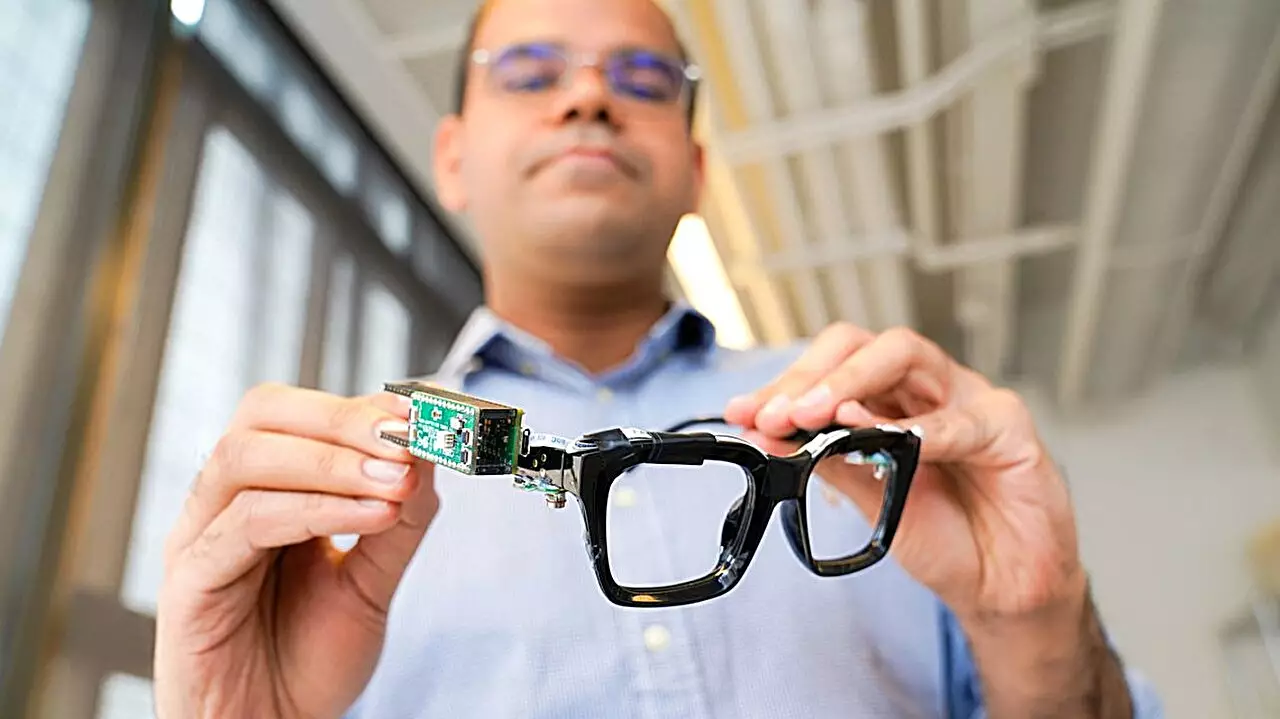Throughout history, sonar has been an invaluable tool for ocean mapping, submarine detection, and shipwreck exploration. Now, researchers at Cornell have developed a groundbreaking variation of this technology: PoseSonic, a wearable device that utilizes micro sonar to track the upper body movements of the wearer in three dimensions. By combining inaudible soundwaves with artificial intelligence (AI), PoseSonic has the potential to revolutionize augmented reality, virtual reality, and personal health tracking.
The lead author of the research paper on PoseSonic, Saif Mahmud, is excited about the device’s capacity to capture detailed data on human activities outside of the laboratory environment. This wealth of information can enable individuals to become more self-aware and understand their behaviors better. With its ability to accurately track body poses, PoseSonic opens up possibilities for fine-grained analysis of human movements in everyday life.
What sets PoseSonic apart is its novel combination of inaudible acoustics and AI algorithms to track body poses via a wearable device. By integrating AI into low-power and privacy-conscious acoustic sensing systems, PoseSonic minimizes the instrumentation required on the body, making it more practical and energy-efficient for daily use. Unlike other data-driven wearables, PoseSonic does not necessitate an initial training session with the user, enhancing its accessibility and usability.
PoseSonic consists of microphones and speakers attached to the hinges of eyeglasses. Emitting inaudible soundwaves, the speakers bounce the waves off the upper body, creating an echo profile that is picked up by the microphones. Through its machine-learning algorithm, PoseSonic accurately estimates the wearer’s body pose. Impressively, PoseSonic can track movements in nine body joints, including the shoulders, elbows, wrists, hips, and nose. This comprehensive tracking capability allows for precise head positioning estimation, eliminating the need for additional devices.
Compared to existing wearable devices that heavily rely on video cameras, PoseSonic offers several distinct advantages. Utilizing acoustic sensing, PoseSonic consumes 10 times less power than a wearable camera, resulting in superior battery performance. Additionally, the diminutive size of the acoustic components makes PoseSonic unobtrusive and comfortable to wear throughout the day. From a privacy standpoint, sonar-based tracking poses significantly fewer risks than wearables equipped with cameras, as Mahmud emphasizes.
With ongoing development and refinement, PoseSonic holds immense potential for improving various fields. In the realm of augmented and virtual reality, PoseSonic’s accurate body tracking can enhance user experiences, immersing them in immersive digital environments. Moreover, by collecting detailed physical and behavioral data, PoseSonic can contribute to personalized health monitoring, offering individuals deeper insights into their well-being and promoting healthier lifestyles.
PoseSonic is not just a wearable device; it signifies a quantum leap in body-sensing technology. Through the ingenious marriage of sonar and AI, Cornell researchers have paved the way for a new wave of possibilities in fields ranging from entertainment to healthcare. As the world witnesses the transformative potential of PoseSonic, we can anticipate a future where our devices seamlessly integrate with our bodies, enabling us to understand ourselves better and unlock our full potential.


Leave a Reply